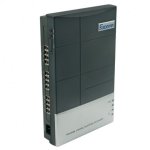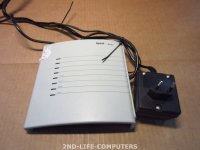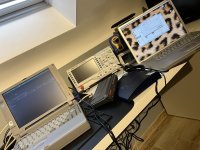fjellebasse
New Member
Hi there,
I've followed this guide to create my own dial-up server: Dial-Up Server
Currently I have the following analog modems:
- TRON DF 56K (EXT)
- US Robotics 56K Sportster Faxmodem (EXT) - I just bought this New-in-Box
- LASAT Safire 56K (EXT)
I also just purchased a US Robotics 56K Courier V.Everything that is currently underway to my location.
The machines I use for the purpose of playing around with old dial-up connectivity is currently a Power Macintosh Beige G3 and an IBM Thinkpad T42.
I'm looking to find other people who enjoy using old modems for various retro stuff like BBS, IRC, WWW (Frogfind, theoldnet.com etc.) and so on.
It would be nice to get to know some ways to fine tune the setup, exchange tips and tricks, or find other use cases for old-school dial-up.
Anyone in here play around with this kind of stuff? What kind of modems do you have? What do you do with them?
PS. I was unsure of in which category I should put this post.
I've followed this guide to create my own dial-up server: Dial-Up Server
Currently I have the following analog modems:
- TRON DF 56K (EXT)
- US Robotics 56K Sportster Faxmodem (EXT) - I just bought this New-in-Box
- LASAT Safire 56K (EXT)
I also just purchased a US Robotics 56K Courier V.Everything that is currently underway to my location.
The machines I use for the purpose of playing around with old dial-up connectivity is currently a Power Macintosh Beige G3 and an IBM Thinkpad T42.
I'm looking to find other people who enjoy using old modems for various retro stuff like BBS, IRC, WWW (Frogfind, theoldnet.com etc.) and so on.
It would be nice to get to know some ways to fine tune the setup, exchange tips and tricks, or find other use cases for old-school dial-up.
Anyone in here play around with this kind of stuff? What kind of modems do you have? What do you do with them?
PS. I was unsure of in which category I should put this post.



